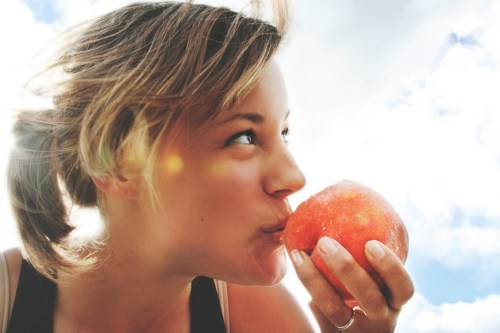On a recent trip to Costa Rica, I was presented with a strange snack which somewhat resembled a thirsty, dense, and stringy peach or squash. “What is it?,” I asked, studying the maybe-fruit or vegetable. “Pejibaye,” came the answer, with a smile.
Without an ounce of clarity, I speared the food onto my plate and was surprised to notice it was softer than it looked—it’d been cooked. I gently forked off a bite and tentatively let it go into my mouth.
It was weird, as expected of anything novel, and also delightful in the most unexpected of ways. Not at all sweet, the fruit tasted exactly like a nut-potato hybrid—almost like a sweet potato, but then also almost like a giant roasted chestnut. I finished both halves offered to me and wished there were more.
Only once I returned home was I able to fully investigate my newfound food crush. The pejibaye—also known as pejivalle or peach palm—is ubiquitous in Costa Rica (which hosts an entire festival dedicated to its glory) and some other parts of Central and South America. It’s a fruit that grows in large clusters on the same plant responsible for another of my favorite foods, hearts of palm. In the US, you can find peach palms in Latin supermarkets or order them canned online.
“For people who are very active, it would be a great source of carbohydrates that’s also full of fiber and lots of vitamins and minerals.”
Over email, Gabriel Villalobos Fallas, the chef who’d prepared my peach palms at Vista Celestial, assured me that the fruit isn’t just addictively tasty—it’s also rich in health benefits. To gain deeper insight into its nutritional value, I asked Dana Hunnes, PhD, MPH, RD, to tell me more.
As it turns out, the peach palm is an excellent energy source. “For people who are very active, it would be a great source of carbohydrates that’s also full of fiber and lots of vitamins and minerals,” says the senior dietician at the RR-UCLA Medical Center. “It’s basically a natural carb-loading type of food.” (Sorry, keto friends.)
In fact, she says, it’d be perfect for Olympic athletes, marathoners, and cyclists, and describes it as being similar to an American smoothie staple—the date. “You could eat a lot of dates and get similar carbs, but the benefit of this is that it also has high levels of vitamin A and other micronutrients like vitamin C and some of the B vitamins.”
In Costa Rica, peach palms are often served boiled and peeled, with a dollop of sour cream. However, they’re also used in everything from cakes to breads to jellies and even liquor. One of the most popular ways to enjoy the pejibaye, however, is in a simple soup. Below, chef Fallas shares his go-to recipe—a perfect pre-workout snack for the last few weeks of winter. (Just close your eyes and pretend you’re on a beach in Santa Teresa.)
Scroll down for an easy peach palm soup recipe.

Pejibaye Soup
Yields 4 bowls of soup
Ingredients
1 1/2 lbs pejibayes1/8 cup chopped onion1/4 cup chopped sweet peppers1/8 cup finely chopped celery1 Tbsp coconut oil1/8 cup chopped chives4 cups of water
1. Peel the pejibayes and remove the seeds. Then, clean them in cold water.
2. Boil them for 30 minutes.
3. Sauté the onion, the sweet pepper, and the celery in oil.
4. Put all of the ingredients together in a blender and mix them for five minutes. Then, put that mix back on the stove with high heat for another five minutes or until it boils.
Did you miss the memo on moringa, another exotic-sounding food that has the wellness world abuzz? Or what about galanga, the hidden hero in your Thai takeout?
Sign Up for Our Daily Newsletter
Get all the latest in wellness, trends, food, fitness, beauty, and more delivered right to your inbox.
Got it, you've been added to our email list.











